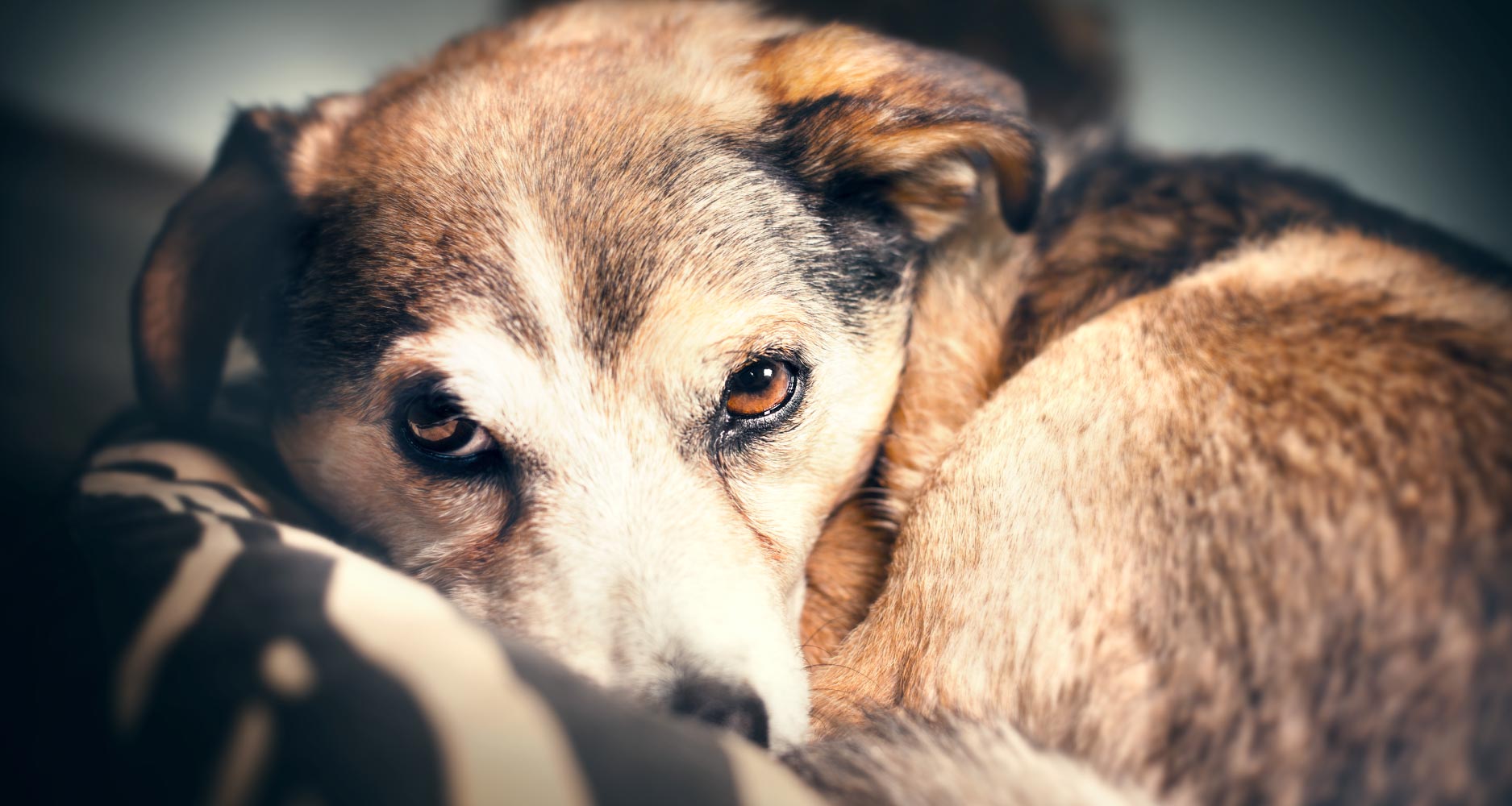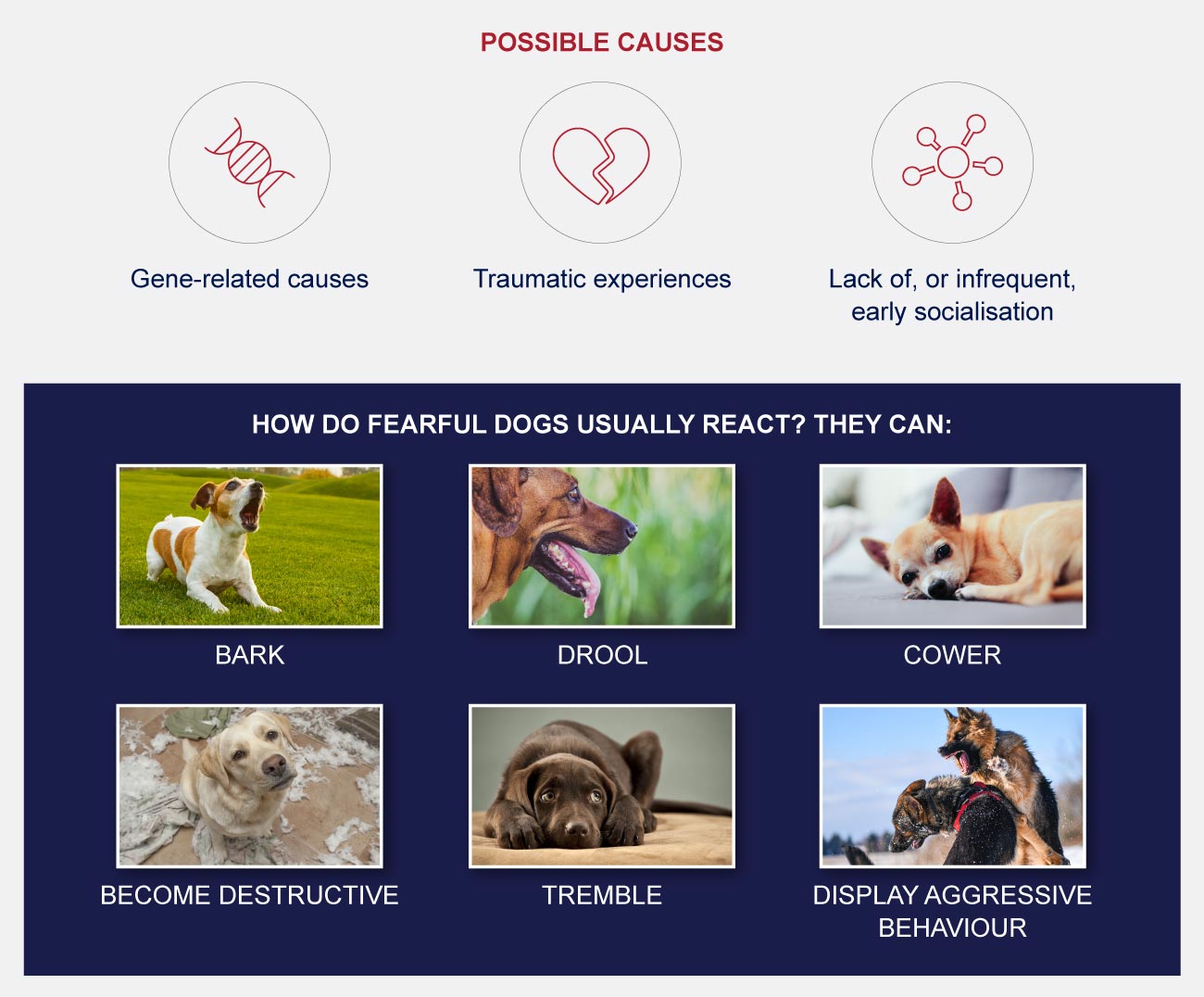
TRENDING

SIGN UP and Start Receiving
Our Monthly Newsletter,
The Chronicles
THE MOST COMMON DOG PHOBIAS AND FEARS

It’s usually sad and can cause stress when dog owners realise their dog has a fear or phobia.
They often don’t understand the cause and don’t know how to handle the behaviour that comes with the fear.
Possible causes:
- Gene-related causes
- Traumatic experiences
- Lack of, or infrequent socialisation, early in life

Here is a list of common things dogs can be scared of and why:
1. OBJECTS
Noisy toys, household appliances (often hair dryers and vacuum cleaners) can strike fear in a dog. Many of these ‘encounters’ can be avoided, usually when you’re at home, but some are more tricky to handle, for example, fixed or moving objects on your walking routes. You also can’t control changes in the environment, whether natural or human-driven.
At home, you can try turn exposure to the object into a positive experience. Encourage your dog (lure with a treat) to approach the unplugged vacuum cleaner. Then use desensitisation to gradually reduce her or his fear.
2. STAIRS
This phobia seems strange, but it’s not uncommon. Whether it’s a trip up or down the stairs, some dogs are reluctant or even refuse to go ahead. This phobia is believed to be rooted in the lack of or insufficient socialisation early in life.
What a lot of dog owners don’t know is that socialisation doesn’t only involve humans and other animals; it also involves exposure to objects and stimuli. If a dog has never had to use stairs, why should it seem easy and normal all of a sudden?
What you can try: help your dog, step by step, to understand and use stairs (treats should come in handy).
3. CAR RIDES
Not all dogs enjoy car rides, especially if they’re only exposed to the experience later in life or if a trip in the car is associated with going to the veterinary or kennels, feeling carsick or any form of abandonment. This fear can usually be reduced and even overcome.
If the issue starts with getting into the car, try to use treats to lure your dog and offer praise every step of the way. Don’t rush this process. Once everyone’s in, go for short, slow drives and gradually increase the distances.
4. CHILDREN
This might sound like a strange fear to have, but the reasons are understandable. If a dog hasn’t had many (or any) interactions with children, these unfamiliar small humans can seem intimidating. The lack of socialisation is one of the reasons, while the other is a bad experience with kids.
Toddlers and even older children, who haven’t been shown how to treat dogs, can be too affectionate or accidently hurt dogs. A dog trainer or behaviourist should be able to help with this phobia.
5. STRANGERS
This phobia can be difficult for dogs to overcome and for their owners to deal with. Delivery men, new friends and even family members your dog hasn’t met can all seem very threatening. How are you supposed to show your dog that it’s OK to accept and trust all these new, strange people?
Step one: allow your dog to just assess the situation first and approach when he or she is ready.
Step two: avoid increasing the fear (or possible aggressive behaviour), don’t force anything and don’t scold your dog. You can also get in touch with a dog behaviourist to help address the phobia.
6. MEN
This fear usually stems from a lack of socialisation, but can also be caused by earlier abuse from a male. The phobia can result in growling, snapping or even biting, so it’s important to address it. Desensitisation (decreasing fear by controlled exposure), in a non-threatening environment, is often recommended.
7. VISITS TO THE VETERINARY
Just like many people are not excited about hospital visits, many dogs don’t like visits to the veterinary. The thought of tests and procedures can be, understandably, unsettling. Imagine a dog’s first visit to a veterinarian clinic or hospital. The experience can be overwhelming in terms of intense smells; hard, cold surfaces; strange noises; and an unfamiliar person handling (or even restraining) them.
Also, many veterinarians are not focused on making their environment less stressful. Then, after all these intense experiences, the actual checkup and vaccination still needs to happen. One or two traumatic experiences at the veterinary (even if everything seems OK to you) can lead to a phobia for veterinary clinics and veterinarians.
To help treat the phobia, try going to the veterinary a couple of times without the need for checkups so that the environment also has a non-threatening side.
8. SOLITUDE
Solitude, or more officially, separation anxiety, is a difficult phobia to deal with. It can lead to excessive barking and destructive (among other) behaviour as soon as the owner leaves. The first thing you can do when leaving and returning is to not make a fuss. Don’t say goodbye (don’t even wave) and don’t welcome them with open arms and dialogue when you return. Simply switch to ignore mode until your dog calms down completely before you show affection.
Desensitisation can also work: Basically you start by leaving the house for very short periods and gradually increase the time spent away. Another option: change your behaviour. Don’t follow normal routines before you leave the house, or when you return (if you have specific habits), whether it’s putting on headphones; running around because you’re always late; handing out treats; frantically searching for your keys; slamming the door when you leave, etc.
The trick is to be calm and quiet; that is, don’t draw attention to yourself when leaving or returning. This way, stress may be reduced.
9. THUNDER
Dog owners shouldn’t be surprised or too alarmed if their dog has a negative reaction towards thunder, although some dogs are more affected than others. Some can even sense an oncoming storm. This fear can cause dogs to tremble, tuck away their tail, flatten their ears, hide or display destructive behaviour. A few dogs also struggle to control their bladder and/or bowels.
The official term for this phobia is astraphobia. Seeking help is recommended as this phobia can be very stressful for dogs.
10. FIREWORKS
This one is quite common. Fireworks are loud, inconsistent and overtly stimulating both in sound and display. Many dogs tremble when they hear and/or see fireworks. What you can do to help: search for audio recordings and videos online to slowly introduce the sounds and sights to your dog, especially if you know that he or she will be exposed to displays of fireworks in the future.
This controlled introduction can stop the phobia from developing or help treat it. Anti-anxiety medication (or a sedative) may be considered in extreme cases but should only be administered after consulting your veterinarian.
Related Articles













